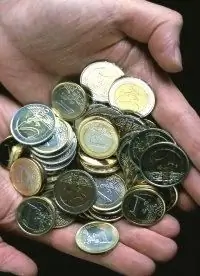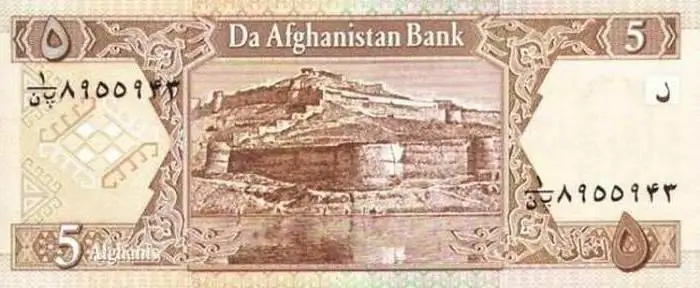2025 Author: Howard Calhoun | [email protected]. Last modified: 2025-01-24 13:10:26
The origin of Bahrain's currency is an integral part of the country's history. It reflects not only the various stages of this history, but also the strong relationships that Bahrain has developed with many countries of the world. From 1959 to 1966, Bahrain, along with the rest of the Gulf states, used the rupee issued by the Reserve Bank of India at a price of 13 rupees per 1 British pound. After gaining independence in 1965, Bahrain introduced its own currency. However, the heritage of the rupee in the Persian Gulf can still be observed, as the locals commonly refer to 100 fils (1/10 dinar) as a rupee.
History of the monetary system of Bahrain
This state was the first in the Persian Gulf to recognize the use of coins as a means of increasing trade and financial activity. Indeed, their introduction into circulation has made a significant contribution to the development of Bahrain's reputation as a commercial center. Strategically located on one of the world's oldest trade routes between East and West, Bahrain has become an important transit point, offering merchants a secure place to work, a supply of food andwater. While its coastal waters were the source of the finest pearls in the world.
Over the centuries, virtually every form of money has passed through the hands of Bahrain's merchants, allowing it to claim a unique economic and political status in the region. The use of many forms of money continued until 1965 when it introduced its own currency, the Bahraini dinar.

The name of local money comes from the Roman word "denarius". It is denoted by two characters: BD or.د.ب. The Bahraini dinar is subdivided into 1,000 fils. It was first used in 1965, replacing the rupee previously used in the Gulf states. The exchange was made at the rate of 1 dinar=10 rupees. The Central Bank of Bahrain is solely responsible for issuing the dinar currency and controlling its circulation. The current inflation rate for the dinar is around 7%.
Features of coins
Coins in denominations of 100, 50, 25, 10, 5 and 1 fils were introduced in 1965. Some of these, such as the 1, 5 and 10 fils coins, were minted in bronze, while the rest were made in copper and nickel. Later Bahrain coins were made of brass instead of bronze and an alloy of two metals. The denominations currently used in the country are 5, 10, 25, 50, 100 and 500 fils. The minting of the one fils coin was discontinued in 1966. The coins used today are of different sizes. Five fils have a diameter of 19 mm, 10 - 21 mm, 25 - 20 mm, 50 - 22 mm, 100 - 24 mm. Their weight ranges from 2g to 6g.
Initially, all coins of the Bahraini currency featured a palm tree, but the new 25 fils coin features the seal of the Dilmun civilization, which may have been located on this island; 50 fils depict a boat, and 100 fils depict the coat of arms of the country.
One of the most striking illustrations of the symbolic importance of images on Bahrain's currency was the 500 fils coin, which was withdrawn from circulation in 2011 because it featured an image of Pearl Square, a roundabout that was the site of protests against the government. The ring itself was also destroyed.

History of banknotes
The Bahrain Monetary Board introduced the first notes in 1965. They had denominations of 10, 5, 1, ½ and ¼ dinars. The 100 fils note was introduced later in 1967. About six years later, the Bahrain Monetary Agency replaced the board. Accordingly, a new batch of banknotes was issued in denominations of 20, 10, 5, 1 and ½ dinars. This agency was renamed the Central Bank of Bahrain in 2006.
Later, in 2008, new banknotes were introduced. The central bank was determined to reflect the culture of Bahrain and its modern development on the new money. On September 4, 2016, 10 and 20 dinars banknotes were introduced with improved security features. The colors of Bahraini paper money are brown, peach, red, blue and green. In addition to the currency of Bahrain, the dinar, Saudi Arabian rials are also accepted for payment in the country. However, it should be taken into account thatthe 500 riyal banknote is an exception and is usually only accepted by major airports, e-shops and supermarkets.
What banknotes look like:
- Bahrain's ½ dinar currency note is brown and features the Bahrain Court and Parliament Buildings.
- 1 dinar red, with Al-Khedya al-Khalifiya school on one side and Arabian horses, Sails and Jewel monument on front side.
- 5 BD banknote in blue, depicting Sheikh Isa's house in Muharraq and the Riffa fort on the front, and the first oil well and aluminum plant on the back.
- Sheikh Hamad bin Isa bin Salman Al Khalifa (King of Bahrain) is depicted on the front side of the 10 BD banknote, with Sheikh Isa bin Salman Al Khalifa Bridge in the background.
- Sheikh Hamad ibn Isa Al Khalifa is also featured on the 20 BD banknote with Al Fateh Islamic Center on the back.

Currency rate
In 1980, the Bahraini dinar was pegged to the IMF Special Drawing Rights, which in practice pegged it to the US dollar. Therefore, the value of the dinar was pegged to 1 BD and was equal to 2.65957 US dollars and 10 Saudi riyals. This exchange rate was officially recognized in Bahrain in 2001. Currently, the Central Bank of Bahrain has fixed the value of the dinar against the US dollar at the rate of 1 US dollar=0.376 BD. As of June 23, 2017, the exchange rate of the US dollar to the Bahraini dinar was 1 US dollar=0.3774 BD. Therefore, this monetarythe unit remains strong as before. Currently, the exchange rate of Bahrain against the ruble is 177.92 RUB per 1 BD. It should be noted that the situation has changed little in recent years. As of today (January 2019), the Bahrain exchange rate against the dollar is 0.38 BD per 1 USD.
Recommended:
The currency of Angola: description, history and exchange rate

The article talks about the national currency of the South African state of Angola. Information about the history of the currency, its exchange rate in relation to the banknotes of other countries is presented. It also talks about exchange transactions and cashless payments
The currency of Finland. History, appearance, currency exchange rate

In this article, the reader will get acquainted with the currency of Finland, its history, appearance, and some other characteristics. In addition, you will find out where you can exchange money in Finland
Portuguese currency: description, brief history and exchange rate

The article talks about the Portuguese national currency, there is a brief description and history, as well as the exchange rate against other currencies
Kenyan currency: history, description, exchange rate

Kenya is a country rich in culture, history, beautiful nature and friendly, hospitable people. It is geographically diverse, with snow-capped mountain peaks, vast forests and open plains. The official currency of the country is the Kenyan shilling
The currency of Afghanistan: the history of the currency. Curious information about the currency

Afghan currency Afghani has almost a century of history, which will be discussed in this material

